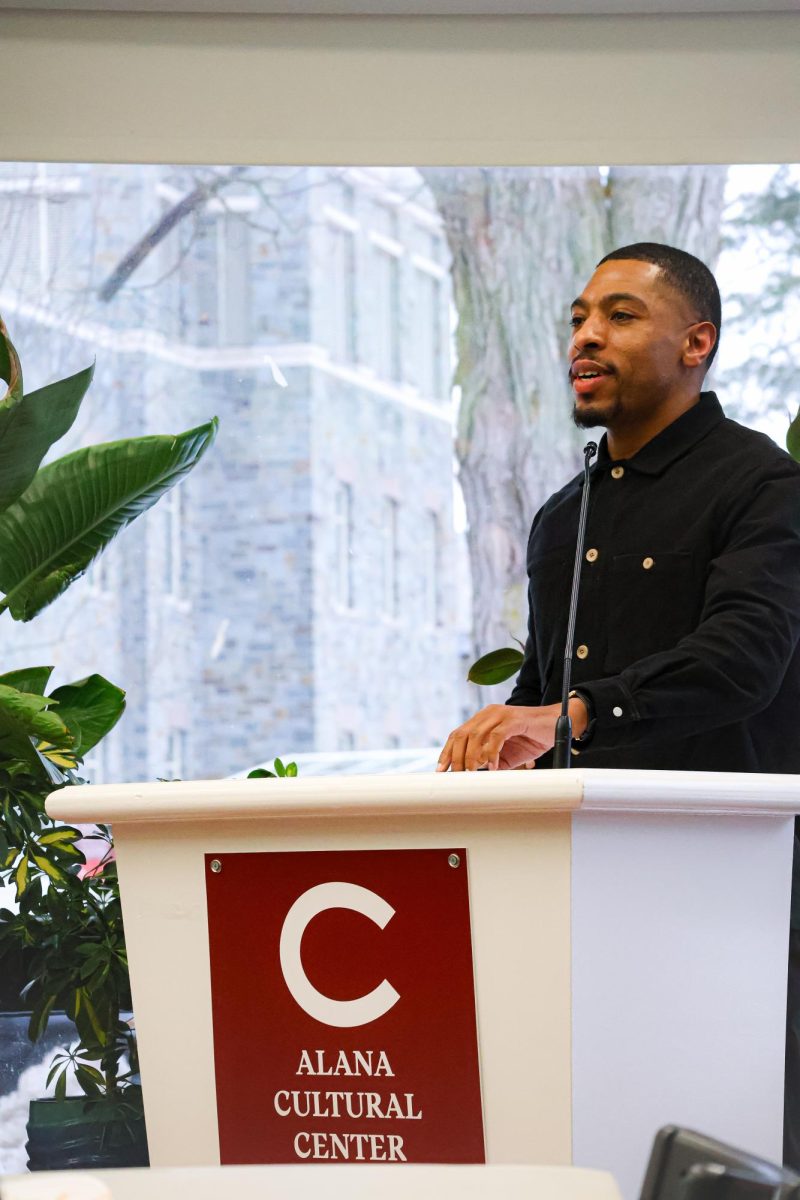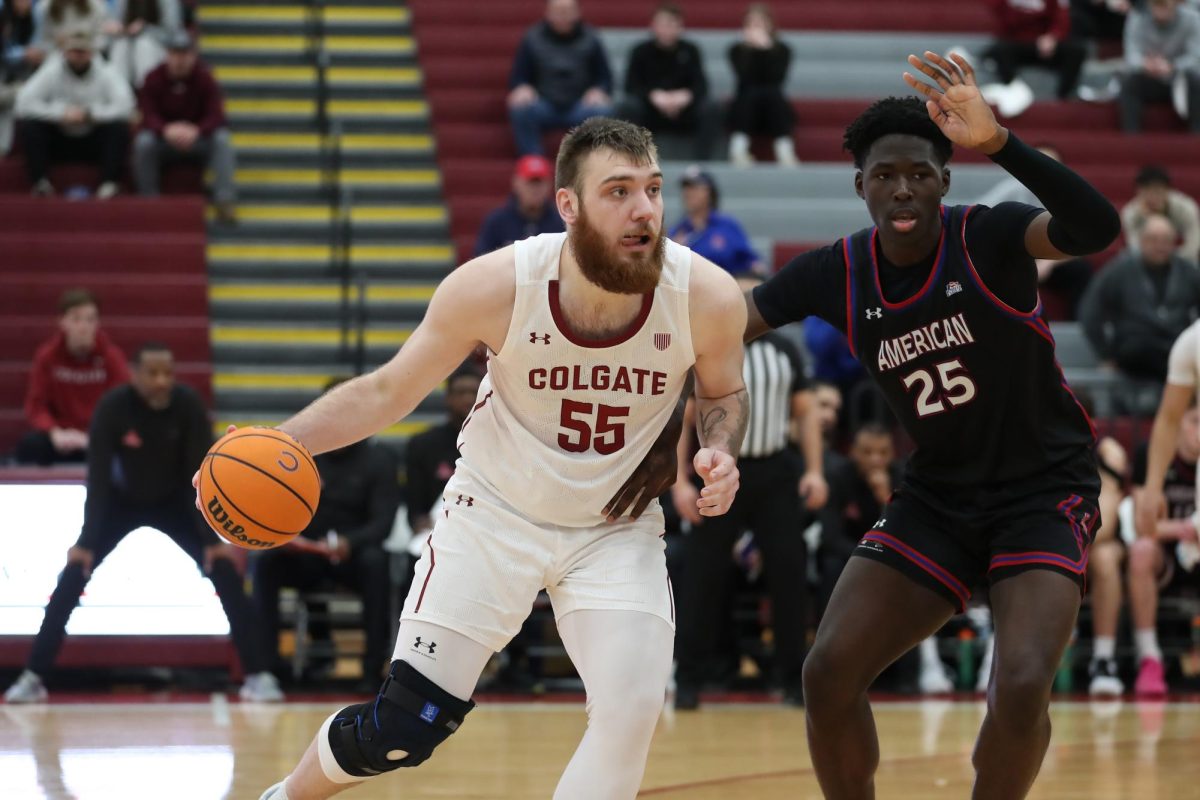The Colgate University Department of Art hosted a lecture by architect and artist Suchi Reddy on the ethics of artificial intelligence (AI) on Wednesday, Oct. 23. The talk was part of Reddy’s “Belonging and Bias” project in collaboration with the University as this year’s Christian A. Johnson Artist-in-Residence.
Reddy’s installations intend to generate a ripple effect that could continue past the life of her work. Some examples include “Connective Project” (2017) in Prospect Park, “X” (2019) installed in Times Square and “me+you” (2021), a large-scale interactive sculptural work on AI that calls on our responsibility and collective agency in its creation. Beginning with an introduction from Associate Professor of Art Margaretha Haughwout, the lecture explored how Reddy’s artistic practice took root in her architectural training through public sculpture and experiential work, interacting with material innovation and technologies and observing the relationship between power and community.
Throughout the lecture, Reddy consistently called upon the significance of our environment in shaping our identities.
“Our environments are not just these passive containers for us. We always think that humans are separate from their environments, but we’re just like spiders,” Reddy said.
Arriving in the United States from India at the age of 18, Reddy began to feel a sense of being in between these two locations. Reddy emphasized the “liminal space” she experienced as an immigrant and the immense influence it has had on her work.
“There was a freedom in it, but there was also a sense of not belonging — the sense of not being in the environment in which you were raised or feel comfortable in,” Reddy said.
She traced this feeling back to cultural differences, describing Indian culture as the antithesis of individualism, with its emphasis on family values instead.
“You are placed in context always,” Reddy said.“When I came here to this country, there was no context to be placed into.”
Though she did not possess negative or positive feelings on the matter, Reddy’s art has allowed her to “mine” this material. Reddy further prompted her audience to explain their first or recent experience with bias and belonging in a single word. The varied answers were supposed to further contribute to a textile that she is creating on bias and belonging. Junior Lindsay Hess associated the word “family” with belonging and bias. Hess explained how the origins of her beliefs came from her family, but that it was not until she was older that she began to understand her biases more clearly and felt more autonomy over her beliefs.
“All of my first memories involve my family members — they loved me unconditionally, and at the time, they were all I really knew,” Hess said.“Simultaneously, as my parents raised me, any biases they might have had were unconsciously taught to me.”
Reddy also explained that there have been biases arising in AI, and described her experience of attending conferences where AI was unable to transcribe speech of different accents. In elaborating upon AI in art, Reddy presented an inquisitive position on the subject.
“I’m terribly interested to see where we will go with it — I’m not dystopian about it. I do think that all the possibility lives with us as humans, and I believe in claiming that agency in how we shape our world,” Reddy said.
Hess provided a similar, positive perspective on AI, stating the gradual importance of AI in modern discussion.
“[I believe] some very talented people will use AI in new and interesting ways, and I’m very excited to see what they come up with,” Hess said.
Believing that it will not be going anywhere anytime soon, Hess also encouraged the importance of being taught how to utilize AI in a productive manner. First-year Hannah Mattam shared similar views, explaining that education must reflect these changes in the world, but it is equally important to ensure that the individuality of artists are considered and not lost to AI. She emphasized the unique capability that the art world has to communicate with people.
“[Art is able to perceive] these limitations and [call] attention to it in a way that can speak to its audience,” Mattam said.
Conclusively, Reddy ended the lecture by sharing her hopes that AI will aim to represent humanness.
“I am hoping for the humanness to be what remains,” Reddy said. “I can imagine when we don’t exist anymore and all that’s left is what we made. That’s not so crazy to me, but I would hope that whatever that is reflects us in the most complete way possible.”














